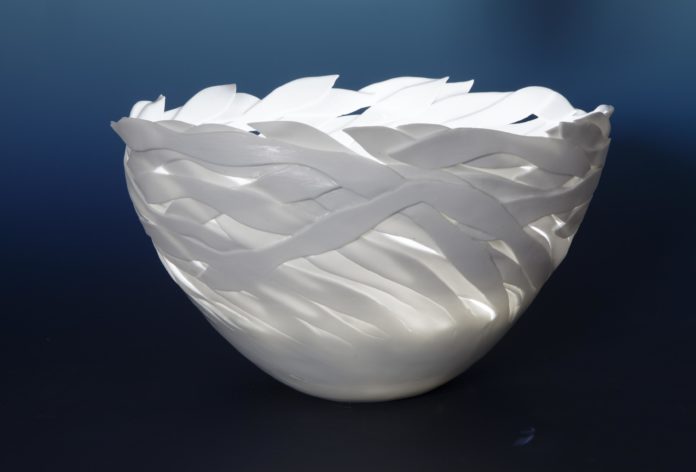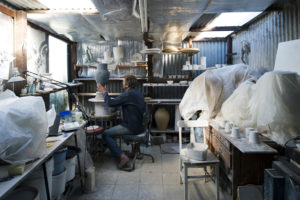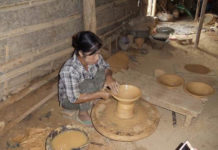
Ceramics is one of Australia’s major craft forms and can be found throughout the country. As a continent, Australia has a wide variety of clay bodies, including natural kaolin deposits and new blends such as Southern Ice porcelain. A diversity of techniques is practised including throwing, slipcasting, slabbuilding, coiling and sculpture. The Japanese ceramic tradition was a strong influence in the 1970s and wood firing remains a popular pursuit, particularly in rural areas.

Ceramics is taught formally in universities and TAFEs (Technical and Further Education colleges). Courses exist in most states, including specialisation at RMIT University (Melbourne), Australian National University, University of South Australia, National Art School, Sydney College of Arts and University of New South Wales (Sydney). Private ceramics studios and workshops now increasingly offer night classes, which are quite popular. Businesses like Northcote Pottery combine sale of pottery supplies with courses.
Ceramics is produced in a variety of spaces. Studio ceramicists produce unique objects for exhibition in galleries, to be purchased by collectors. Workshops such as JamFactory in Adelaide produce large batches for sale in shops and as commissions to restaurants. Bendigo Pottery (Victoria) has been producing ceramics for more the 150 years. Robert Gordon (Victoria) has made high-fired stoneware for over 25 years. Mud Australia is a successful Sydney business and a major supplier of production ceramic porcelain items.
There are some remote Aboriginal communities that produce distinct lines of ceramic sculptures that reflect their unique cultures, such as in Hermannsburg (Central Australia), Ernabella (South Australia) and Tiwi Islands (Northern Australia).
A number of public galleries support ceramics. The Shepparton Art Museum hosts regular international awards for ceramics and exhibitions. Private galleries specialising in ceramics include Sabbia (Sydney) and Beaver Galleries (Canberra).
The main national organisation is The Australian Ceramics Association. They publish The Journal of Australian Ceramics, organise an annual Australian Ceramics Open Studio event, and facilitate a national conference, The Australian Ceramics Triennale which is held every three years. There is also a triennial gathering called Clay Gulgong in New South Wales. There are regional ceramics associations in most of the Australian states. The town of Warrandyte, on the outskirts of Melbourne, has an annual Pottery Expo.
In 2008, Les Blakebrough was made a Living Treasure of Craft for his creative and research efforts in development of translucent porcelain clays. In 2009 The South Australian ceramic artist Jeff Mincham was also made a Living Treasure for his development of Raku techniques to depict the surrounding landscape. Many other ceramic artists reflect the Australian landscape in their forms and glazes, such as Pippin Drysdale (Western Australia) and Sandy Lockwood (New South Wales). Stephen Bowers (South Australia) is renowned for his graphic skills in depicting Australian bird life.
This entry has been written with advice of The Australian Ceramics Association.
Further reading
Cochrane, Grace. 1992. The Crafts Movement in Australia: A History. New South Wales University Press.




